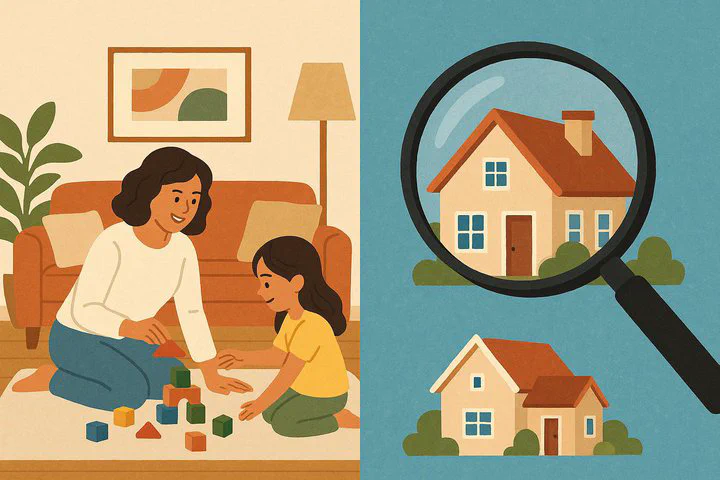Legal Basis for Ex Inspecting Non-Custodial Home

Why This Matters to You
Are you worried about what happens when your child stays at your ex’s house?
Do you feel nervous when your ex asks to look around your home?
This guide explains the legal basis for ex inspecting non-custodial home situations. You will learn:
• what a custody order is
• when an inspection is allowed
• how to protect both your child’s safety and your own privacy
I’m Gina Iverson, a family-law attorney and mom in a blended family. I’ve felt the same stress you might feel right now. Let’s walk through the rules together in plain, simple terms.
Understanding Custody Orders and Parenting Time
A custody order is a paper from the judge that says:
- where your child lives most of the time
- who makes big choices about school, health, and daily care
The order also sets a schedule called parenting time so everyone knows when the child stays with each parent.
Most states publish custody order and parenting time guidelines online. These public rules cover things like holiday swaps, snow days, and what to do if someone is late.
So, when can a home check happen? Only when a judge puts it in writing. That written rule is the legal basis for ex inspecting non-custodial home spaces. If it is not in the order, an ex must go back to court and ask before any visit happens.
Rights of the Custodial Parent
If you are the main (custodial) parent, you may ask, “Can I look at my child’s other home?” The right of custodial parent to inspect exists only when:
• the judge writes it into the custody order, or
• the public guidelines say you may do a safety check
Typical limits look like this:
• 24-hour written notice
• daytime visit only
• focus on safety items—smoke alarms, clean rooms, enough beds
• no snooping in drawers or private papers
If your order is silent, you cannot just show up. You must ask the court to add an inspection line or request an outside helper such as a child-welfare worker.
Legal Implications of Home Inspections
Breaking any court rule can lead to contempt of court—a legal term that means the judge can fine you, order make-up parenting time, or even change custody. These are the very real legal implications of home inspections.
Keep these points in mind:
• If an inspection clause exists, follow it exactly.
• If no clause exists, you may politely refuse an unapproved visit.
• Judges notice parents who keep calm and obey orders.
When parents disagree, the court may send you to a mediator—a neutral person who helps you find a middle ground. If safety worries grow, the judge can assign an outside helper to inspect instead of either parent. This still honors the legal basis for ex inspecting non-custodial home settings while lowering tension.
Privacy Concerns in Custody Arrangements
It is normal to feel uneasy about someone looking around your house. Here are quick ways to guard your space while keeping your child safe:
• Keep a copy of the custody order handy.
• Stick to what the judge wrote—nothing more, nothing less.
• Stay polite but firm: “Let’s follow the order.”
• Write down each visit—date, time, and what was checked.
• Ask for an outside helper if direct visits feel too tense.
These steps balance privacy concerns in custody arrangements with the need for safety.
Quick Checklist
Before any home visit:
☐ Read your custody order and parenting time guidelines.
☐ Give or receive proper notice, if required.
☐ Tidy safety items—smoke alarms, bedrooms, food.
☐ Have a witness or outside helper if tensions run high.
☐ Record what happens for your files.
Take the Next Step
Still unsure about the legal basis for ex inspecting non-custodial home situations? Reach out to a family-law attorney or local legal-aid office for advice tailored to your case. Have a story or question to share? Join the discussion in the comments below—our community is here to support you.